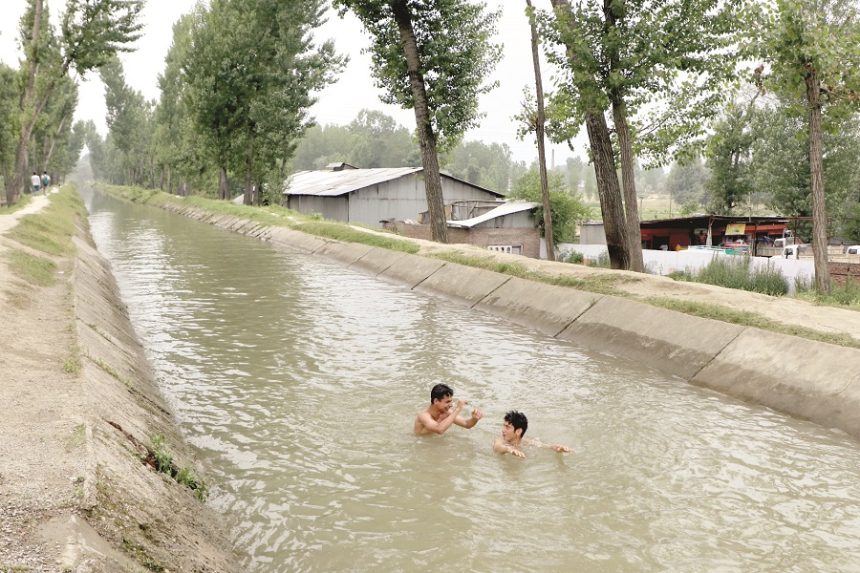Srinagar hits 4th highest temperature
Experts link Kashmir’s extreme weather to climate change & deforestation
Unplanned urbanization & pollution contributing to Kashmir’s climate crisis
Srinagar, Aug 10: Kashmir is grappling with erratic weather patterns, with Srinagar recording its fourth-highest temperature of 36.2°C on July 28, surpassing a 30-year-old record. On August 10, the city reported a day temperature of 34.8°C, which is 4.8°C above the norm. Last month, Srinagar also experienced its highest minimum temperature in 132 years, recording 24.6°C.
Experts attribute these extremes to severe climate change impacts, which are affecting the region’s ecosystem and livelihoods. The Himalayas, including Kashmir, are witnessing increasingly inconsistent weather, with temperatures rising by 6 to 8 degrees Celsius above normal in some areas.
Dr. Mukhtar Ahmad, Director of MeT, highlighted that the current heat wave stems from a prolonged dry spell and a lack of major western disturbances in recent months. While neighboring states like Himachal Pradesh and Uttarakhand are experiencing good rainfall, Kashmir is suffering due to local factors and the Pir Panjal range, which blocks the monsoon.
Environmental expert Faiz Bakhshi, heading the Environmental Policy Group (EPG), cited deforestation, destruction of wetlands, and unplanned urban growth as major contributors to rapid climate change in the Valley. He emphasized the need for comprehensive measures to address these environmental challenges, including better urban planning and enforcement of environmental laws.
Environmental activist Suhail Farooq noted that changing weather patterns, characterized by dry winters and extreme summers, are due to both global climate change and regional factors. The loss of forest cover has diminished natural temperature regulation and water cycle management.
Dr. Sarfaraz Ahmad, an environmental researcher, warned of the accelerated retreat of Kashmir’s glaciers, including Kolahoi, Thajiwas, and Harmukh, due to rising temperatures and pollution. He pointed out that the region has been experiencing erratic weather for nearly three decades, resulting in droughts, flash floods, and windstorms.
The situation calls for a multi-faceted approach that combines environmental conservation, sustainable development, and active community engagement to mitigate the effects of climate change and preserve Kashmir’s fragile ecosystem.









